Phipps Bridge has been an important crossing over the River Wandle for centuries. In this article, local resident Peter Evans tells us about its history, from the 1500s to today, and explores how the area has changed over time.


This post is written by Peter Evans, a local resident with a passion for the River Wandle.
I once went on a fascinating guided walk organised by a local group called Walk And Talk who hold free social walks every Saturday morning. The walk was led on this day by local resident and author William Dedman who spoke about his memoir ‘Redskin Village’, a story of life growing up on the Phipps Bridge estate.
During the walking tour we passed Phipps Bridge, after which the estate is named. In this article I would like to focus on the bridge itself and my connection with it and the surrounding area.
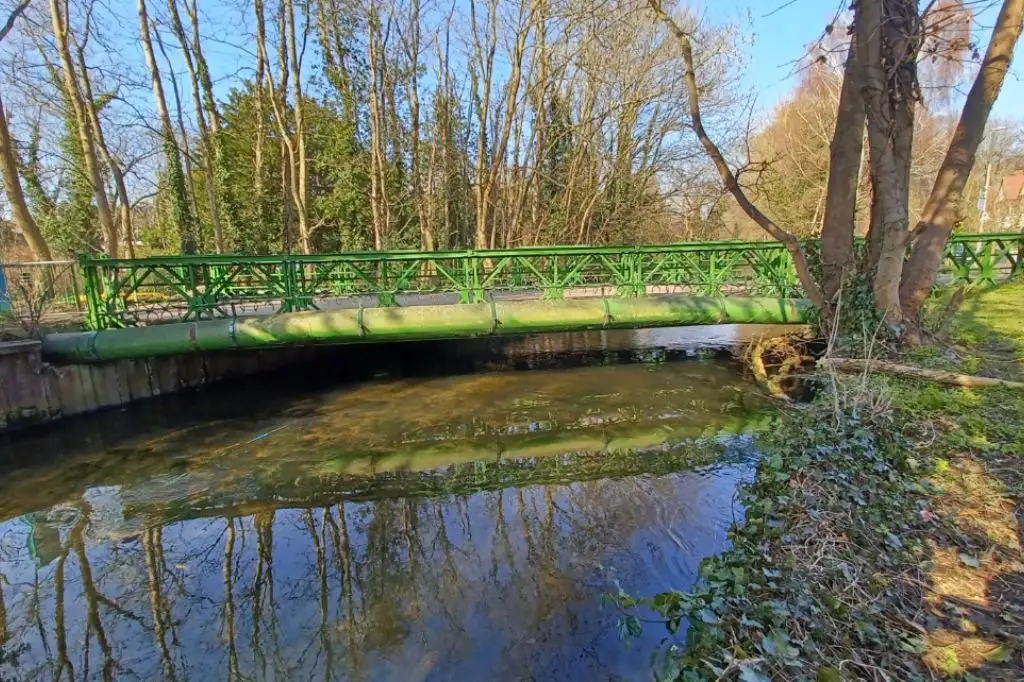
There have been records of a bridge here since the 1500s but the current structure dates from the 1950s. During WWII a ‘Bailey’ bridge spanned the river. The previous bridge to this one was made of concrete but today it is made of steel with a wooden walkway, and is only open to pedestrian traffic.
The area has many places that precede written records. Haslemere Primary School is built on a burial site that pre-dates the Romans. Even before the Norman conquest in 1066, the Wandle powered Saxon water mills. Evidence has been excavated that during the last Ice Age, rhino, mammoth, wild oxen and reindeer roamed the land. No doubt with all of those prey animals there would also have been predators such as wolves. Must have been a wild place for early humans.

In 2017 a new bridge was opened on the site following a year long renovation. I recall this closure because it meant I could only cross the River Wandle at Windsor Avenue if I were going towards Colliers Wood. The bridge is close to Deen City Farm and the Wandle Trail that passes nearby Merton Abbey Mills and the site of Merton Priory.
Merton Priory suffered destruction in 1538 as part of the dissolution of the monasteries when the Tudor King, Henry VIII split from the Catholic Church and formed the Church of England. The bridge is also close to the route of the Roman road known as Stane Street that was an important transport link between London and Chichester.
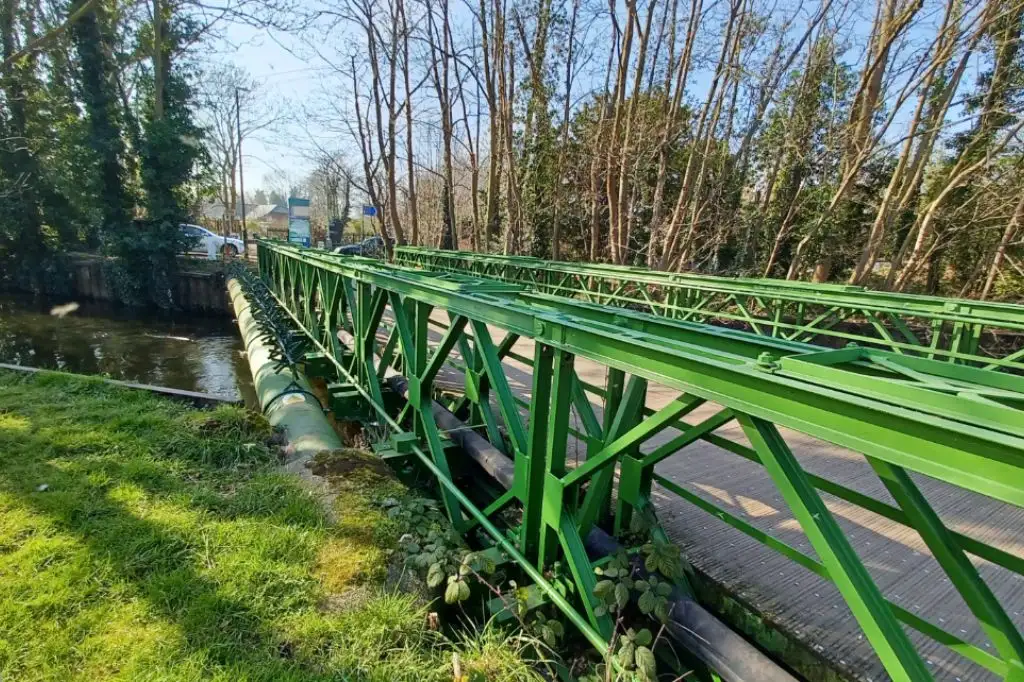
Much of Stane Street now forms the route of the modern A24. The bridge marks an ancient boundary point between the settlements of Mitcham and Merton. Nearby Colliers Wood has been an important crossing of the river Wandle since prehistoric times.
In 1871, Gilliat Hatfield lived in Wandle Villa which stands, roughly, on a parcel of land known as Howards Field. It is a short walk from the bridge. In 1872 he bought Morden Hall from the Garth family. Sir Richard Garth acquired many acres of land around Morden in the 1550’s, eventually becoming Lord of the Manor.
The Garth family owned a lot of land in the area for many centuries. The names Hatfield and Garth are still remembered in place and road names locally. The land directly adjacent to Wandle Villa is now used as allotments.
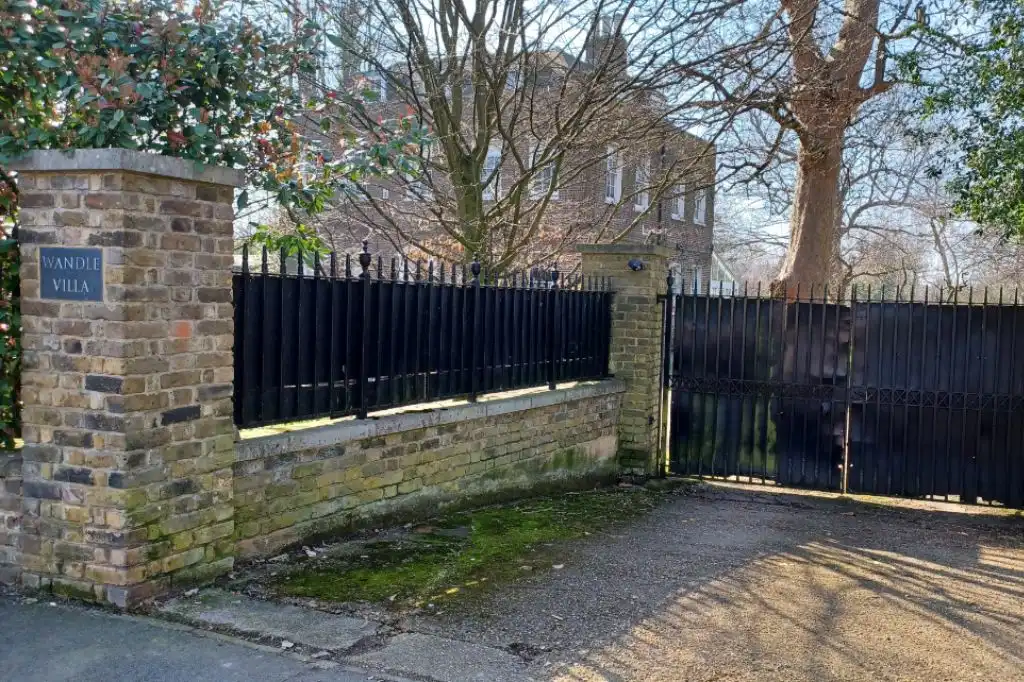
When I was at Rutlish School in the late 1970s, two friends and I would often walk past Merton Park railway station after school, along the footpath between Dorset Road and Melbourne Road. At that time there was a double span footbridge that crossed the two tracks of the railway with some waste ground underneath. One track went south towards Croydon, and since 10th May 2000, has been part of the Croydon Tramlink. The other branch has since become a nature trail that emerges on to the A24 Morden Road which is the main road between South Wimbledon and Morden.

Before 1989 there was a second bridge along here that crossed a disused rail line along the side of Abbey Recreation Ground. This freight line previously serviced the factories of the Deer Park industrial estate, and from October 1984 until April 1986 I worked on that industrial estate at a wine bottling plant and drinks wholesalers in Windsor Avenue. The building where I worked later became the film studios for the TV series The Bill.
When the new road, Merantum Way, opened, children from the nearby Merton Abbey Primary School attended the opening ceremony. The route between Merton Park Tram Stop and Morden Road is now a nature reserve but, in 1975, was still a disused railway and a great place to not be spotted during weekday term-times escapes from school lessons, and a chance to learn from unsupervised wanderings.
Merantum Way now follows the course of the old railway track which passes the roundabout at Merton Abbey Mills and carries on towards the site of a foundry, that was still in operation when I was a young man, but is now the site of the Tandem Centre shopping area. There is now a museum under this road which is very well stocked and has many artefacts from the Augustinian Priory that stood nearby in the 12th century.
The museum is situated in the underpass between the car parks of the supermarket that used to be known as the Savacentre and the other car park that serves Merton Abbey Mills. Close by is the William Morris pub named after the famous artist, socialist reformer, and fabric designer born on 24th March 1834 who had a printing works nearby just north of Phipps Bridge. He was a leading exponent of the Arts and Crafts movement.
Morris had his printing works in Merton from 1881 until 1888 during the reign of Queen Victoria. Many of the buildings that were in the area when he was producing his fabrics still remain. Arthur Liberty (1843-1917) founder of Liberty & Co also used to mix his fabric dyes nearby in the early 1900’s. He followed the prevailing style of his age known as Art Nouveau. Liberty produced his fabric in a building that is now known as the Colour House Theatre which today stages shows for both children and adults. There is also a road nearby called Liberty Avenue.
Calico printing became popular in England with the arrival of the French Huguenot refugees in the late 17th century when they fled persecution by Louis XIV. The French Protestants sought sanctuary here and brought the art of calico printing onto fabric with them. Calico printing was a technique also used by William Morris when he opened his works in 1881.
Calico (cotton) printing involves transferring a design on to the fabric and became popular in Merton from 1724 onwards. Textile printing ceased at Phipps Bridge and much of the land returned to cattle grazing. I remember, quite clearly, cattle still being grazed in Morden Hall Park when I was a boy. I also remember though, that the only fish I could see in the river were sticklebacks. Recently, however, there have been many species of fish reintroduced into the river including eels, carp, roach, chub, barbel, dace and even brown trout!
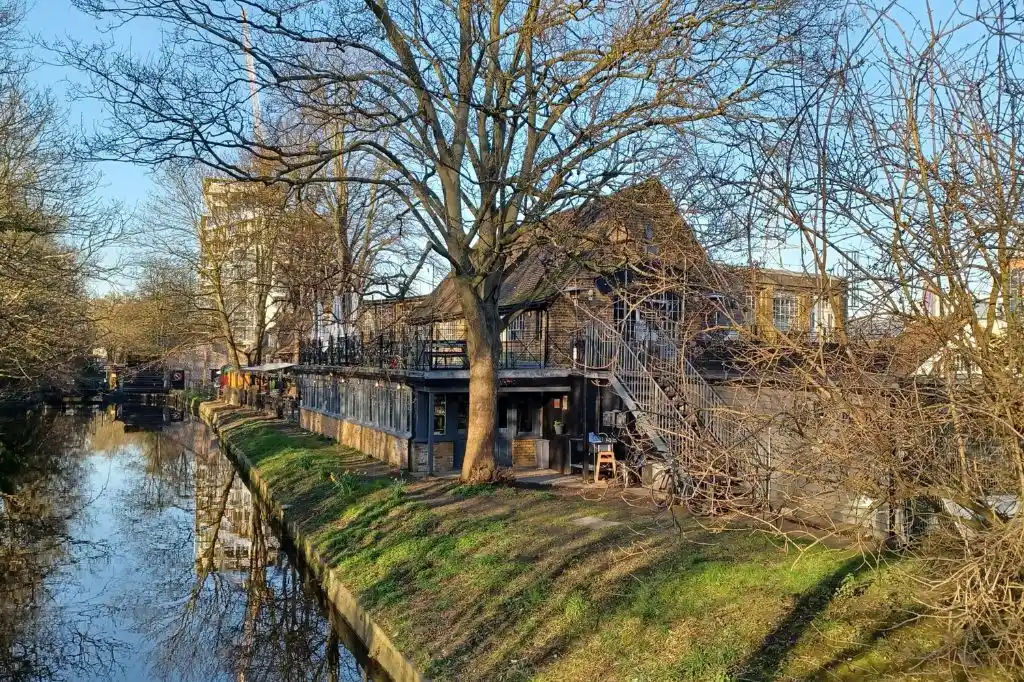
On a particular day in 1975 I was taking an individual unauthorised inset day from school and passed along the abandoned railway from Merton Park Station, under the bridge at Morden Road and along the route of what is now Merantum Way. Back then it was an abandoned track. Work was just starting to refurbish the buildings into a new retail experience that was to become Merton Abbey Mills with shops, restaurants, craft workshops and a pub.
At the time the A24 Morden Road went over a bridge and carried on to South Wimbledon. Merantum Way had yet to be constructed. I remember well that I walked under this bridge along the disused rail track. On my walk along this abandoned railway line I remember seeing and hearing the workmen carrying out the work to renovate Merton Abbey Mills. This was long before the development of the Tandem Centre, which was still a foundry when I was a teenager, and the supermarket that started life as the Savacentre.
The Savacentre was built on the site of Merton Board Mills and only opened its doors on 28th February 1989. Merton Board Mills operated on the site of the Savacentre from 1926, where cardboard boxes were made. Somebody has to manufacture the cardboard boxes to hold and transport goods! My aunt worked at Merton Board Mills in the 1970’s. It was demolished in the 1980’s.
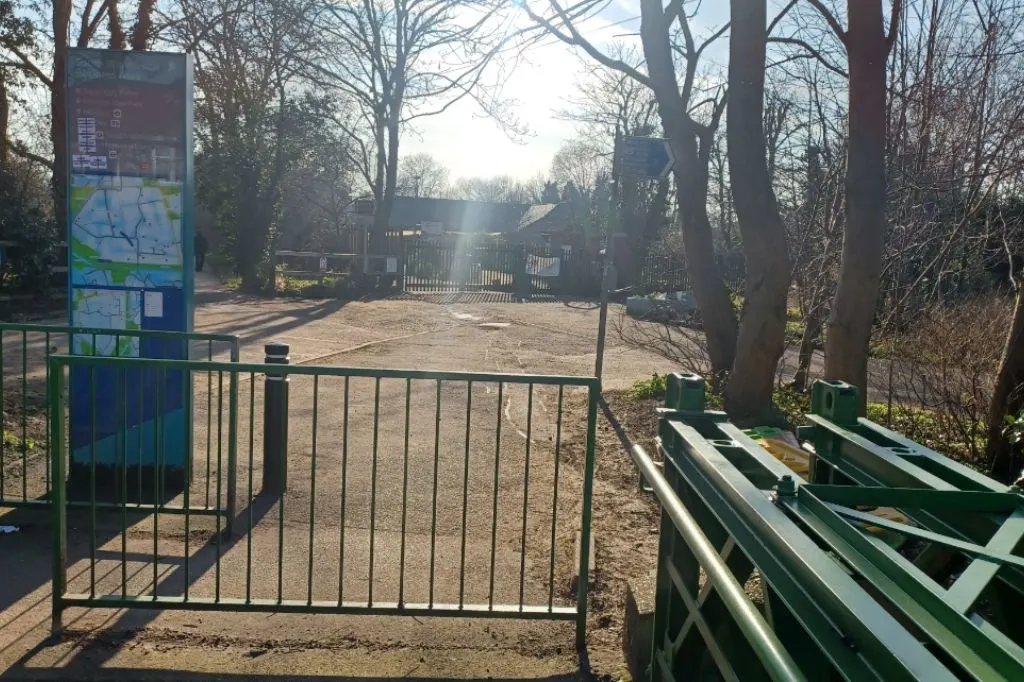
The actual Phipps Bridge crosses the river near Deen City Farm. The farm is now on the west bank. Deen City Farm originally opened in 1978 and was situated on the Phipps Bridge housing estate on the east bank. It moved to its present location in Bunces Meadow on the west bank of the river in 1994 and I have visited this farm many times with my children since then. It is one of London’s oldest city farms. Deen City Farm now rests on ground leased by Merton Council from the National Trust.
On the east bank Phipps Bridge Road joins on to Haslemere Road that, along with Church Road, forms the boundary of the Phipps Bridge Estate. Also on the east bank are the remains of a folly in the form of a ruined castle turret and row of workmen’s cottages dating from the early 1800’s. The folly, constructed during the reign of Queen Victoria, was actually built to support the cottages from subsidence into the river in the 1870s.

The Phipps Bridge estate was built during the 1950/60s near the bridge that it is named after, and was supposed to be a show estate, but during my youth in the 1970/80s it had a terrible reputation as a vermin infested housing estate, populated by a transient and somewhat lawless group of people who had no stake in the place where they lived. I only braved attending a party in one of the tower blocks on a single occasion! My memory is of the estate being run-down, dirty and covered in graffiti. In 1994 three of the four tower blocks were demolished and replaced with low rise housing organised in little closes. The estate is, now indeed, a much more pleasant place to stroll through.
Today the Phipps Bridge is only accessible to pedestrian traffic. It is situated approximately halfway along the 12 mile length of the river that runs from two sources, one at Waddon ponds and the other at Carshalton Ponds and flows into the River Thames at Wandsworth.
I bought my copy of Redskin Village by William Dedman in the Wandle Industrial Museum in Mitcham.

Ivan Fomin
Saturday 8th of March 2025
Well that was a fascinating read and wander back down memory lane. We’re not always talking about ancient history here and many of us share memories of the places Peter had written about. So much has gone but this ever changing social landscape should be what binds us together as a community especially when we tell stories and reminisce. Thank you for sharing Peter.